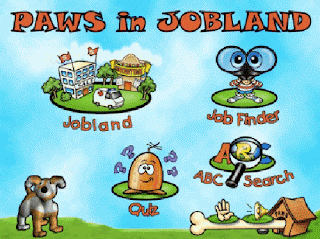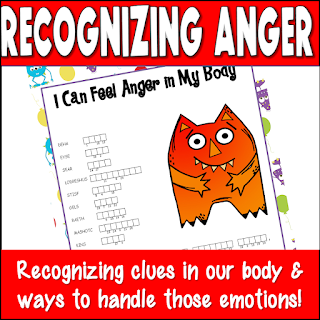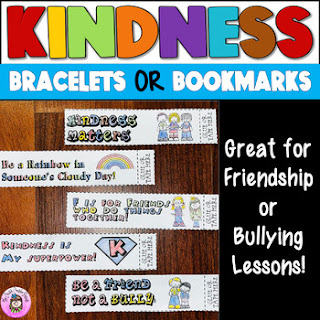Exploring the Soothing Splendor of Dyed Rice
Hey everyone, guess what? Over the weekend, I had the most amazing idea! I decided to dye rice using Kool-Aid, and let me tell you, the results were mind-blowing! 🌈✨
My initial plan was to create a colorful rice tray as a fun alternative to a sand tray. But then it hit me, why not use the dyed rice to make feelings jars with my students? Each color could represent a different feeling, and they could visually represent how much of each feeling they have in a sealed jar. It's like turning a common issue into a beautiful work of art that's meaningful to the students. How awesome is that?
And let me tell you, the process was super simple! All I did was put about 1 cup of rice in a ziplock bag, mix 2 tablespoons of hot water with Kool-Aid powder, and pour it into the bag of rice. Then, I squished, squashed, and mashed it until the rice was fully covered in vibrant colors. After spreading the rice out on wax paper to dry for about 15 minutes (although I left it out longer just to be safe), I ended up with bags of different colored rice—cherry red, grape purple, watermelon pink, orangy orange, and even some yellow, green, and blue using food coloring. Talk about a rainbow of possibilities! 🌈😍
.JPG)
I was beyond excited to bring my dyed rice to school and see how I could use it. And wouldn't you know it, the perfect opportunity presented itself sooner than expected! While working with a student on anger management and finding alternatives to destructive behaviors, she noticed my colorful rice and asked about it. That's when inspiration struck! We decided to make a Relax Jar using a baby jar filled with blue rice and beads with the letters R-E-L-A-X and some sequins. The idea was that when she gets angry, she can turn the jar and search for the letter beads, giving her something positive to focus on and hopefully calming her down. How amazing is that? 🌟 Since then, I have switched to plastic jars. I just recycle my old vitamin jars after being thoroughly washed and sanitized!
.JPG)
Update: Can you believe it? I'm still in love with this colorful dyed rice. 🌈✨ ! It's been years since I started using it with students, and it's still one of my favorite strategies to use with students. The best part? If you store the rice in an airtight container, it lasts forever! Personally, I love reusing empty liquid coffee-mate containers to keep my big batches in—they make for perfect storage with their clear containers and convenient pouring spouts.
Since my first post, I've been exploring different ways to use this colorful dyed rice. 🌈✨ creation with my students, and let me tell you, the possibilities are endless! Not only is dyed rice visually stunning, but it also has a wide range of benefits for students. Let’s check out some amazing uses and advantages together!
1️⃣ Calming Sensory Tool: One of the most remarkable aspects of dyed rice is its calming effect. The gentle texture and soothing colors provide a sensory experience that can help students relax and find peace in moments of stress or overwhelm. Just running their fingers through the soft grains can bring a sense of comfort and tranquility. It's like holding a jar of serenity in their hands. 🌾💆♂️
2️⃣ Anger Management Aid: Dyed rice can be a powerful tool in anger management strategies. When students feel their emotions escalating, they can turn to the rice as a healthy outlet for their anger. By swirling and shifting the rice in a container, they can release tension and redirect their focus. It's a tangible way for them to physically and mentally engage with their emotions, allowing them to cool down and regain control. 💨🌪️
3️⃣ Coping Skill Development: The process of working with dyed rice provides an opportunity for students to develop valuable coping skills. As they create art or engage in sensory play with the rice, they learn to channel their emotions, express themselves creatively, and find positive ways to manage their feelings. It's a hands-on approach that encourages self-reflection and empowers them to navigate challenging situations with resilience and grace. 🖌️🧠
4️⃣ Artistic Expression: Let's not forget the artistic possibilities that dyed rice offers! Students can use the colorful grains to create beautiful and vibrant works of art. They can design collages, mosaics, or even use the rice as a medium for sensory painting. The versatility of dyed rice allows students to explore their creativity and express themselves in unique and captivating ways. It's like having a rainbow at their fingertips! 🎨🌈
But wait, there's more! Dyed rice has additional benefits for students that extend beyond its calming and artistic qualities. It also promotes:
🌟 Fine Motor Skills Development: Manipulating and playing with the rice enhances students' fine motor skills, such as pinching, grasping, and pouring. These small movements strengthen their hand-eye coordination and dexterity, preparing them for tasks that require precise control and coordination.
🌟 Focus and Concentration: Engaging with the rice demands attention and concentration. Whether it's exploring its textures, carefully arranging it, or working on art projects, students learn to stay present and fully immerse themselves in the task at hand. This cultivates a sense of mindfulness and helps develop their ability to sustain focus.
🌟 Social Interaction and Collaboration: Dyed rice can be an excellent tool for fostering social interaction and collaboration among students. Whether they're sharing a sensory bin, collaborating on an art project, or engaging in a calming activity together, the rice becomes a catalyst for connection and camaraderie. It opens doors for communication, cooperation, and the building of meaningful relationships.
So there you have it, my friends! Dyed rice is not only visually stunning and captivating, but it also offers a myriad of benefits for students. From promoting calmness and anger management to developing coping skills and fostering artistic expression, the possibilities are truly endless. So grab your ziplock bags, choose your favorite colors, and let your imagination run wild! Together, let's create a world of colorful possibilities for our students. 🌈🌾
Share your own experiences with dyed rice and any additional uses you've discovered in the comments below. Let's keep the conversation going and inspire each other to make a difference in the lives of our students! 🌟💙
Oh, and guess what? I just made another 14 pounds of dyed rice for the upcoming school year. Get ready for even more colorful adventures! 🎉💛
Here are some tips I've discovered along the way:
Use 1 pack of Kool-Aid per pound of rice.
I found that mixed berry (blue), strawberry kiwi (pink), green apple (green), lemonade with a few drops of yellow food coloring (yellow), grape (purple), orange (orange, obviously), and black cherry (red) worked great as flavors.
Only add a few spoonfuls of water to mix the powder, and then put the rice and Kool-Aid dye in a quart-size ziplock bag. Shake, shake, shake for about 30 seconds, and voila! Vibrant and aromatic rice ready for your creative adventures. Enjoy! 🌈🙌
#ColorfulCounseling #SensoryPlay #ArtTherapy #StudentWellbeing
Looking for more Coping Activities? Check these posts out!






















